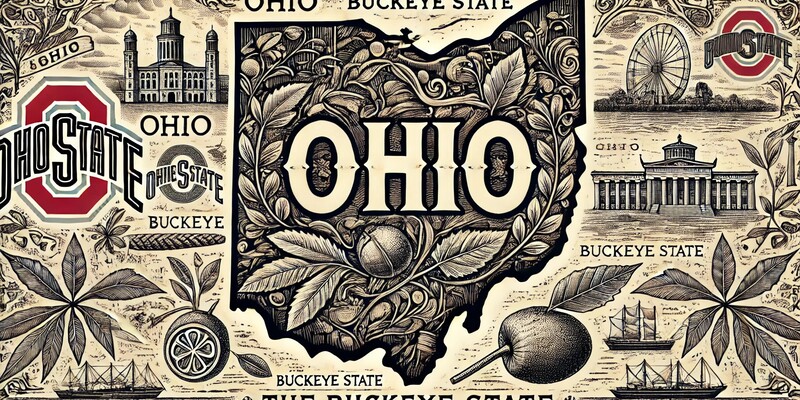
Ohio, known as the Buckeye State, holds a significant place in the history of the United States. For seniors who have a love for history or a connection to the state, exploring Ohio’s past offers a fascinating glimpse into the development of the nation. From its early Native American inhabitants to its role in shaping modern America, Ohio’s history is both diverse and impactful.
Early Inhabitants and Native American Heritage
Long before European settlers arrived, Ohio was home to various Native American tribes, including the Shawnee, Miami, and Delaware. These tribes thrived in the region, utilizing Ohio’s fertile land, rivers, and forests to support their communities. Evidence of their presence is still visible today, with ancient earthworks like the Serpent Mound, one of the largest effigy mounds in the world, offering a window into their sophisticated culture.
The state’s name itself is derived from the Iroquois word “ohi-yo,” meaning “great river,” a reference to the Ohio River, which played a vital role in the lives of these early inhabitants.
European Exploration and Settlement
European exploration of Ohio began in the late 1600s, with French fur traders being among the first to explore the region. The British later contested the French for control, leading to the French and Indian War. After the British victory, Ohio became part of the Northwest Territory under the Treaty of Paris in 1783.
The Northwest Ordinance of 1787 established the framework for Ohio’s settlement and governance, setting the stage for statehood. Ohio’s fertile land and strategic location attracted settlers from the eastern states, leading to rapid growth.
Statehood and Early Development
Ohio was admitted to the Union as the 17th state on March 1, 1803. It quickly became a hub of activity due to its location as a gateway to the West. The construction of the Ohio and Erie Canal in the 1820s further spurred economic growth, connecting the Ohio River to Lake Erie and facilitating trade and transportation.
During this time, Ohio also became known for its contributions to education and abolitionism. The state was home to several institutions of higher learning, including Ohio University, the oldest university in the state, founded in 1804. Ohio was also a key player in the Underground Railroad, with many residents risking their lives to help enslaved people escape to freedom.
Ohio’s Role in the Civil War and Industrial Growth
When the Civil War broke out, Ohio played a crucial role in supporting the Union. The state provided a significant number of troops and resources, and several of its residents became key figures in the war, including Ulysses S. Grant, who would later become the 18th President of the United States.
After the war, Ohio rapidly industrialized, becoming a leader in manufacturing, particularly in steel production, rubber, and automobiles. Cities like Cleveland, Akron, and Cincinnati flourished during this period, contributing to Ohio’s reputation as an industrial powerhouse.
The 20th Century and Beyond
The 20th century saw Ohio continue to grow in influence. It became known as the “Mother of Presidents” due to its being the birthplace of seven U.S. presidents, more than any other state except Virginia. Ohio played a pivotal role in shaping national politics, often being seen as a key battleground state in presidential elections.
In addition to its political influence, Ohio made significant contributions to technology and space exploration. The Wright brothers, pioneers of aviation, hailed from Dayton, Ohio, and astronaut John Glenn, the first American to orbit the Earth, was an Ohio native.
Today, Ohio is a diverse state with a rich cultural heritage. Its history is preserved in numerous museums, historical sites, and landmarks that continue to draw visitors and remind residents of the state’s storied past.
Conclusion
Ohio’s history is a tapestry of Native American heritage, European exploration, industrial growth, and political influence. For seniors interested in history, Ohio offers a wealth of stories and sites to explore. Whether you’re a lifelong resident or simply curious about the Buckeye State, understanding Ohio’s past enriches our appreciation for its present and future. From its role in the early days of the nation to its contributions to modern America, Ohio remains a state with a proud and enduring legacy.






